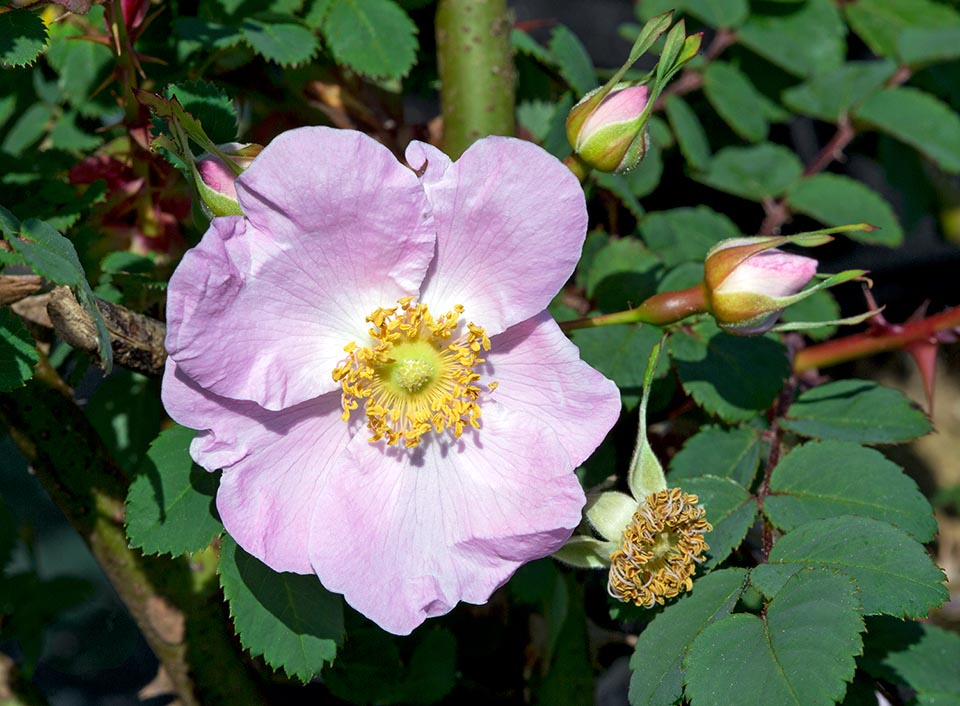Family : Rosaceae
Classification : Wild Rose

Text © Prof. Franca Bessi

English translation by Mario Beltramini
Rosa setipoda owes its description [Hemsl. & E.H.Wilson, Bull. Misc. Inform. Kew 1906 (5): 158 (1906)] to William Botting Hemsley and to Ernest Henry Wilson; the latter remarked how the singular aspect of the rose was due to the long pedicels covered by glandular bristles and to the numerous leaf bracts. It is given in synonymy with Rosa hemsleyana G.Täckh.
Rosa setipoda is a mountain plant (1800 – 2600 m) native to China (Hubei, Sichuan). It’s a nice-looking shrub about 3 m tall, having cylindrical terete and slightly arcuate branchlets. The sparse prickles, if present, are strong and flat, straight or slightly curved. The leaves have the stipules mostly arcuate with triangular lanceolate small auricles and (5-) 7-9 elliptic or oblong leaflets.

Rosa setipoda is a mountain plant native to China that may easily be 3 m tall. The corolla has veined and expanded petals; in the centre the styles are free and much shorter than stamens. The bud is borne by a long pedicel and the hypanthium is unmistakably ampulliform with long caudate sepals. It blooms from May to July © Giuseppe Mazza
The more or less pink flowers fade towards the centre and are borne in corymbs with numerous ovate leaf bracts. The simple corollas have wide petals, emarginate, and with cuneate base. The lanceolate and long caudate sepals are persistent. When ripe, the ampulliform rosehips, oblong and narrow at the apex, have a dark red colour.
It blooms from May to July. Though deciduous, it is appreciated because of the decorative effects of the foliage, the flowers and the rosehips and is utilized in the mix-borders. It requires a fairly sunny exposition but is ubiquitous regarding the soil and is tolerant to cold. It is attractive to bees.
→ History of the rose : from the Wild Roses towards a perfect rose.
→ To appreciate the biodiversity of roses, please click here.
